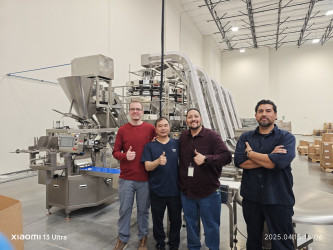Bucket Elevator Price: Factors Affecting Cost & How to Choose
A bucket elevator is a machine used to convey materials vertically, such as grains, powders, or pellets, from a lower level to a higher level. It consists of a series of buckets attached to a belt or chain that moves upward in a continuous loop. Bucket elevators are widely used in industries such as agriculture, mining, and manufacturing for bulk material handling.
Material: The type of material used for the buckets, belt, and other components can impact the price of the elevator. For instance, steel or stainless steel buckets may be more expensive than plastic buckets.
Design: The design of the elevator, such as the head and boot pulleys, can affect the price. A more complicated design may require more labor and material, resulting in a higher cost.
Capacity: The size and capacity of the elevator can also impact the price. A larger capacity may require a bigger motor, which could increase the cost.
Material and components used: The type of material used for the buckets, belt, and other components can affect the price. More expensive materials may increase the cost of the elevator.
Design and customization: A more complex design or customization can increase the cost of the elevator due to increased labor and material requirements.
Height and capacity: A taller or larger capacity elevator will require more material and labor, resulting in a higher price.
Maintenance and installation: Maintenance and installation costs should also be considered when determining the overall cost of the elevator.
Centrifugal bucket elevators are the most common type and are ideal for handling heavy, abrasive materials.
Continuous bucket elevators are designed for the gentle handling of fragile materials and are often used in food processing industries.
Positive discharge bucket elevators are designed for materials that tend to stick or are difficult to discharge, such as wet or sticky materials.
Application: Identify the type of material to be conveyed, its characteristics, and the required capacity. This will help determine the best type of bucket elevator to use.
Maintenance: Consider the maintenance requirements of the elevator and the associated costs.
Cost: Compare prices of different types of bucket elevators and consider the long-term costs associated with maintenance and operation.
Safety: Ensure the elevator meets safety regulations and standards to protect workers and prevent accidents.
Understanding Bucket Elevator
Bucket elevators come in various designs, materials, and capacities. Some of the key factors that determine the cost of a bucket elevator include the following:Material: The type of material used for the buckets, belt, and other components can impact the price of the elevator. For instance, steel or stainless steel buckets may be more expensive than plastic buckets.
Design: The design of the elevator, such as the head and boot pulleys, can affect the price. A more complicated design may require more labor and material, resulting in a higher cost.
Capacity: The size and capacity of the elevator can also impact the price. A larger capacity may require a bigger motor, which could increase the cost.
Factors Affecting Bucket Elevator Price
There are several factors that can affect the price of a bucket elevator, including the following:Material and components used: The type of material used for the buckets, belt, and other components can affect the price. More expensive materials may increase the cost of the elevator.
Design and customization: A more complex design or customization can increase the cost of the elevator due to increased labor and material requirements.
Height and capacity: A taller or larger capacity elevator will require more material and labor, resulting in a higher price.
Maintenance and installation: Maintenance and installation costs should also be considered when determining the overall cost of the elevator.
Types of Bucket Elevators
There are three main types of bucket elevators: centrifugal, continuous, and positive discharge. Each type has its own unique design and is suitable for different applications.Centrifugal bucket elevators are the most common type and are ideal for handling heavy, abrasive materials.
Continuous bucket elevators are designed for the gentle handling of fragile materials and are often used in food processing industries.
Positive discharge bucket elevators are designed for materials that tend to stick or are difficult to discharge, such as wet or sticky materials.
How to Choose the Right Bucket Elevator
When choosing a bucket elevator, consider the following factors:Application: Identify the type of material to be conveyed, its characteristics, and the required capacity. This will help determine the best type of bucket elevator to use.
Maintenance: Consider the maintenance requirements of the elevator and the associated costs.
Cost: Compare prices of different types of bucket elevators and consider the long-term costs associated with maintenance and operation.
Safety: Ensure the elevator meets safety regulations and standards to protect workers and prevent accidents.



